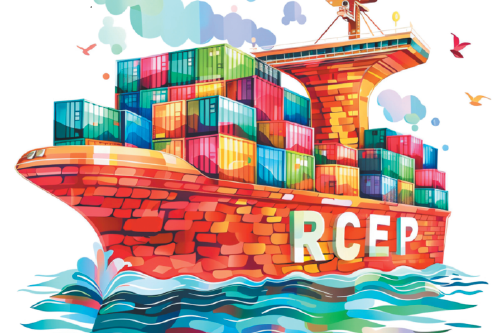A positive peace is possible


Extending of NATO's militarized deterrence to the Asia-Pacific is a threat to the region's stability which is the result of codependent and symbiotic peace and prosperity
The ongoing chaos that seems to be the defining characteristic of US domestic politics sets the backdrop for the attempts of the United States to reassert its hegemony across the world through the global expansion of NATO. US political chaos reflects a political economy that is failing to meet the aspirations of the US people, let alone enable the US to recover its position as the unparalleled global military hegemon.
Despite this, or perhaps in part because of this, the US has been doubling down on a strategy aimed at reasserting military preponderance in Asia. The recent NATO summit spoke decisively to this shift in focus, as the failing proxy war in Ukraine exposes the US-led NATO's limitations in doctrine, resources and systems.
By absurdly seeking to blame China for NATO's failures on the Ukraine crisis, the US and NATO have sought to not only rationalize their military failure but to justify the transfer of focus to Asia. Russia's ongoing battlefield successes are now being ascribed to China's support of the Russian military effort, despite the absence of any evidence of such. For NATO Secretary-General Jens Stoltenberg, China is the "decisive enabler", "inciting the largest military conflict in Europe since World War II".
In raw material terms, the collective Western military industrial complex has been exposed in both qualitative and quantitative terms. Qualitatively, claimed technological superiority has been demonstrated to be false bravado. The cavalcade of Wunderwaffe delivered to Ukraine over the past two years has failed to deliver a decisive edge to the proxy Ukrainian military. Quantitatively, the collective Western supply chains simply don't have the wherewithal to repair and replace what's being lost on the battlefield. This is evident in areas such as the production of 155mm munitions, in which US and NATO ambitions of expanding output have foundered, as described in detail in a recent Reuters investigation. Monthly production capabilities in the collective West aren't sufficient to replace what's being used by Ukraine, let alone come close to matching the productive output of the Russian industrial system.
Talk is cheap, but the West is no longer able to back it up with walk.
But the talk is actually anathema to the realization of stability and peace. Rather, the ways in which the talk is framed — whereby security is a function of militarized deterrence — is the very source of the instability that they are seeking to mitigate. Deterrence discourse aims to dissuade adversaries from attacking due to the supposed costs of doing so. Yet, such an approach in practice is rarely sustainable, doesn't work in many cases and can actually set up an arms race courtesy of the well-known security dilemma. In other words, deterrence has a high risk of failure.
The deterrence discourse seeks to manipulate the risk environment, without ever addressing the root causes of insecurity. Seeking to out-escalate an adversary may work for a while, buying one time, but it is no panacea to the problems that are causing insecurity in the first place. And yet, the entirety of the US-NATO strategic mindset is anchored by this flawed deterrence frame.
The failure of so-called deterrence in Ukraine and Gaza reminds us all that such an approach cannot deliver the security, peace or prosperity that people demand and deserve.
Rather, what's needed is an effort to develop a positive peace, which was once proposed by Johan Galtung, the father of peace studies. A positive peace addresses the holistic dynamics of stability whereby prosperity and peace are framed as codependent and symbiotic; while a negative peace, characterized by the mere absence of military conflict, is a condition of functional deterrence with all the associated instabilities and risks.
One cannot achieve peace through security, but security can be achieved through peace. This requires a reframing of peace through the lens of indivisible and holistic security, which intertwines economic prosperity with transnational peacemaking. The security of one or a select few cannot come at the expense of the security of another, or others. This is a NATO-inspired recipe for instability.
The risk to Asian peace and prosperity is from the expansion of NATO to the region, and the US efforts to reclaim lost primacy. Multipolarity is a global reality, and Asia is a veritable case study of multipolarity and a consensus-based methodology of peacemaking, in which prosperity and peace are two sides of the one strategic coin. The foundations of regional peace, by way of the Bandung Declaration some 69 years ago, remain in place.
ASEAN centrality can and should play a cornerstone role in the future configuration of multipolar peace in Asia. Its success in creating the world's largest free trade agreement — the Regional Comprehensive Economic Partnership — is testament to the success of its understated style and method. Further regional economic integration through trade, investment flows, sovereign data platforms built on standards that enable interoperability, and national currency-based digitalized payments are some of the ingredients for a positive peace.
The US-NATO black thumb of death and destruction, and baked-in escalation risk, are anathema to peace and prosperity in Asia. There are other ways. The spirit of Bandung calls us again.
The author is an adjunct professor at Queensland University of Technology and a senior fellow at the Taihe Institute. The author contributed this article to China Watch, a think tank powered by China Daily.
Contact the editor at editor@chinawatch.cn.


































